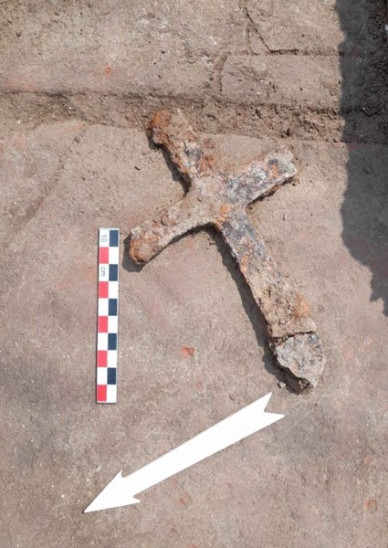The excavation that followed brought to light part of a proto-Byzantine basilica, the floor of which was paved with bricks
In the summer of 2024, during the execution of the project: “Completion of the sewage network and sewage treatment plant for the wider area of Istiaia, phase B» in the Municipality of Istiaea-Edipsos PE Evia, within the settlement of Orea and near the Castle, foundations of walls that formed an arch in plan were found.
The excavation that followed brought part of an early Byzantine basilica in the lightthe floor of which was paved with bricks (fig. 1). The walls are made with rough and semi-hard stones, ceramics and clay, while on the outside they have a thin layer of plaster (fig. 2).
At the starting points of the arc of the arch there are two massive piers, from the inner sides of which two steps start. Of great interest are two iron crosses, as well as a bronze polycandle ring found in the embankment (figs. 3 and 4).
The basilica dates back to the 6th century, a time when the bishopric of Oreo belonged to the metropolis of Corinth together with the other four bishoprics of Evia, and is a very important find that complements our knowledge of the 5th and 6th centuries. in the area, as in the past only a few ecclesiastical sculptures have been identified, some of which are built into newer churches.
The basilica is ‘inscribed’ into an earlier extensive public building, probably an even earlier basilica. Future excavations will be required to clarify the relationship of the basilica to the wider building, as well as its surroundings.
Source :Skai
I am Frederick Tuttle, who works in 247 News Agency as an author and mostly cover entertainment news. I have worked in this industry for 10 years and have gained a lot of experience. I am a very hard worker and always strive to get the best out of my work. I am also very passionate about my work and always try to keep up with the latest news and trends.












